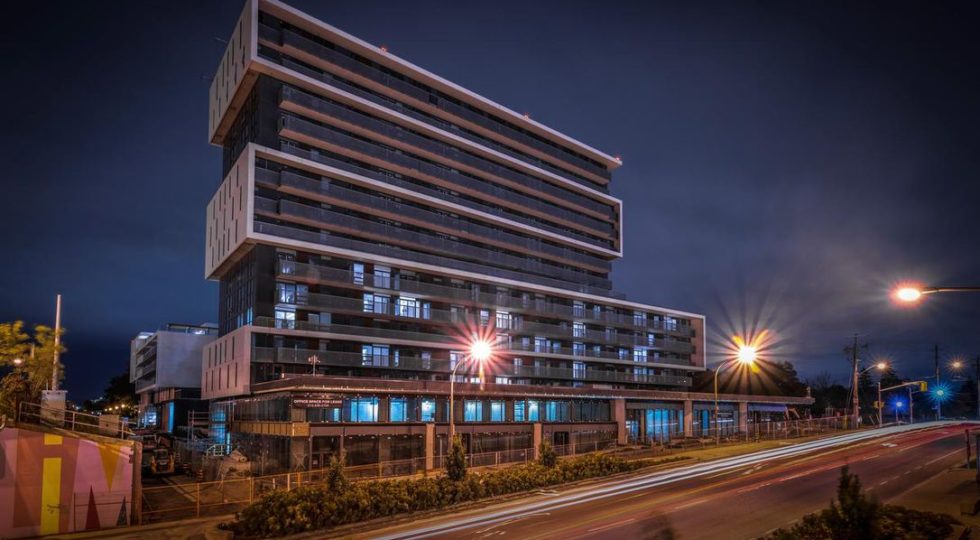Despite what the techno-capitalists would have us believe, disruption has been part of life since the beginning. Sometimes it’s good, sometimes bad. Usually a bit of both.
Postwar city planning is a telling example. Once considered innovative, even enlightened, it was born of the highest of hopes. Its promoters set out to remake cities according to Utopian ideas they thought would lead us to a brave new world.
Yet, we have reached a point where one of the most pressing challenges facing contemporary city-builders is what to do with the good intentions that now line the highway to hell. Or is that the road to suburbia, or, closer to home, social housing?
A recent example is what’s happening at Lawrence Heights, the sprawling neighbourhood completed in 1962. Like its predecessors, Regent Park and Alexandra Park, it was built at a time when social housing preoccupied planners and architects. It was also an era when many big thinkers saw the city as an anachronism whose days were numbered. Their alternatives grew out of a desire for a neater, tidier world in which everything — and everyone — had its place. The organic messiness of traditional cities would be replaced by something clean, coherent and convenient.
In Lawrence Heights, the urge to leave the city behind is evident in the pattern of deadend streets that stopped short of the larger urban context. The housing itself was stripped down and repeated over and over to achieve economies of scale. All very well, of course, but hardly a recipe for architectural delight. Little wonder residents named their neighbourhood the Jungle. It didn’t help, either, that roads were organized seemingly to make it hard not to get lost.
Like Regent Park, the northend neighbourhood is now being torn down for a model community. Built by private sector developers — in this case, Metropia and Context — the 21st-century version aspires to be a continuation of the city.
“It was just cookie-cutter stuff,” says Metropia CEO Howard Sokolowski. “They were building subdivisions, not communities.”
That may not sound particularly profound, but it pretty well explains why postwar planners have yet to produce a real city. “Our job,” he adds, “is to destigmatize Lawrence Heights.”
When finished, the neighbourhood will include subsidized housing as well as full-market units. And, Sokolowski insists, “You won’t know which is which.”
A similar approach is being used at Regent Park, so far, successfully. But at 100 acres, Lawrence Heights is twice the size. Metropia/Context’s agreement gives them the first 25 acres. If it works out, the partnership will redevelop the remaining 75.
“Our task is to create a sense of place and give residents a sense of ownership. We’re creating a variety of built forms,” says Kristy Shortall, Metropia vice-president of development and planning. “We’ve introduced a new network of roads. Before it was a bunch of cul-de-sacs. We’re installing Toronto’s first permeable street. And streets will be lined with rows of trees.”
“The people who live here want to preserve green space in the neighbourhood,” Shortall says. “They also want the place opened up to the city. There’s a huge sense of pride in the community. The people here really help each other out.”
How revealing that even now Toronto planners were reluctant to allow the streets of Lawrence Heights to be connected to surrounding roads. Clearly, they prefer it remain hidden away from non-residents. What they either forgot or have yet to grasp is that the new community will be home to hundreds of middle-class families. Indeed, the first of many phases will comprise 450 private units as well as 250 Toronto Community Housing units.
The most obvious sign of change is The Yorkdale, a handsome midrise residential slab under construction at the corner of Ranee Ave. and Flemington Rd. Visible from the Allen Rd. expressway, which, sadly, divides Lawrence Heights in two, it will include rental apartments as well as innovative rent-to-own units. Designed by KPMB and the IBI Group, the building is a clear signal that the community has begun the process of rejoining the city. The architecture avoids the strictly utilitarian approach characteristic of social housing and offers a reassuring measure of pleasure. It addresses wants as well as needs.
The revitalization of Lawrence Heights has several decades to go, but it’s a safe bet the chances of success are excellent, less for what it is than what it isn’t — a place set apart.
Source: Toronto Star
